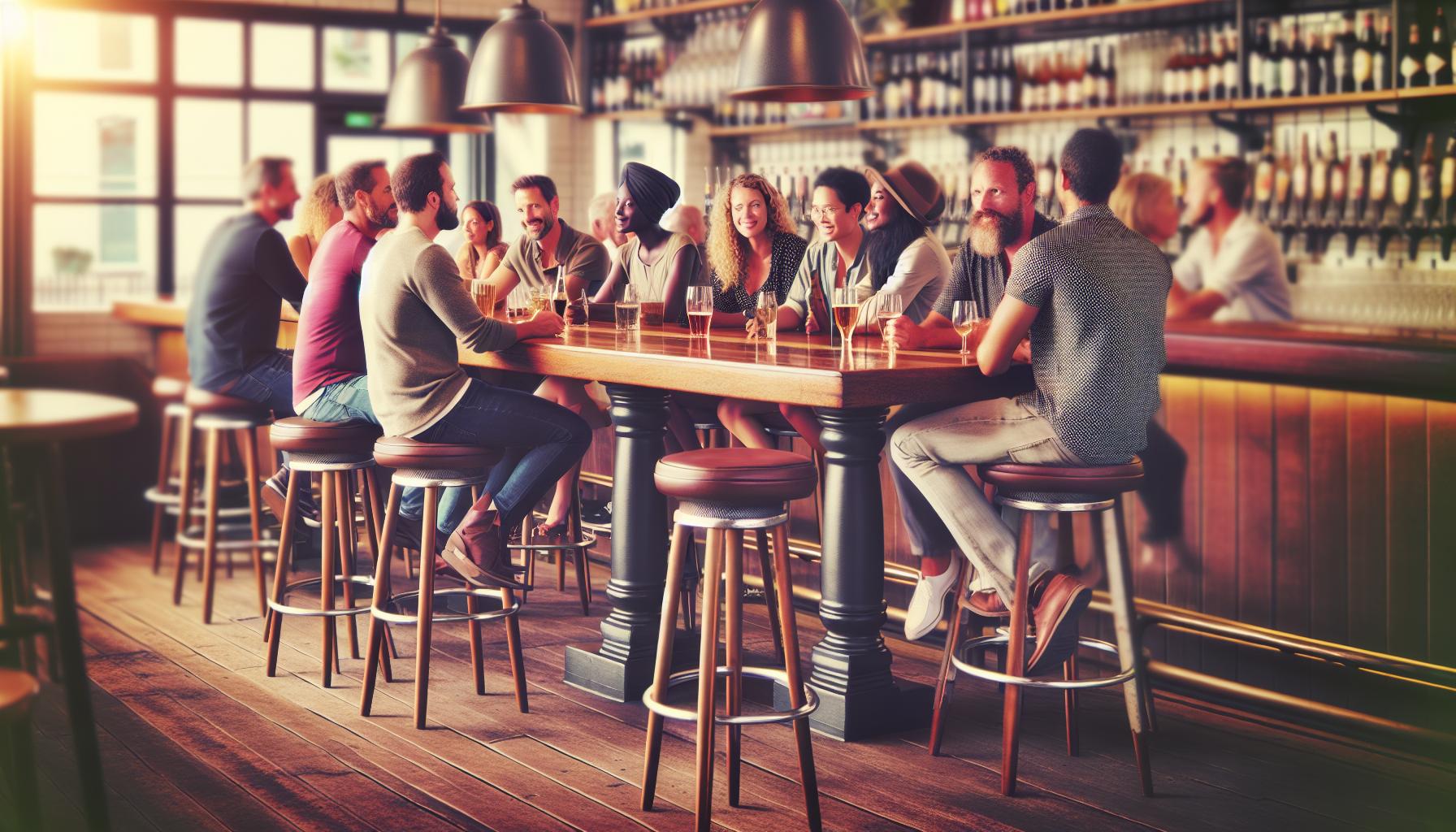When it comes to creating the perfect entertaining space, understanding standard bar table height is essential. This measurement not only affects the comfort of your guests but also influences the overall aesthetics of your room. In this article, readers will discover the typical heights for bar tables, factors to consider when choosing the right one, and tips for ensuring an inviting atmosphere.
What Is Standard Bar Table Height
Standard bar table height typically measures between 100 cm and 110 cm (39 inches to 43 inches). This height accommodates the use of bar stools, which generally range from 70 cm to 80 cm (28 inches to 32 inches) in seat height. For those seeking versatile options to elevate their dining or entertainment spaces, exploring a variety of bar furniture can provide the perfect solution for combining style and practicality.
When selecting a bar table, consider the following key factors:
- Room Functionality: Ensure the table height aligns with the intended use, whether for casual dining, social gatherings, or entertainment.
- User Comfort: Select a height that allows for comfortable legroom and easy seating access, factoring in personal preferences.
- Design Cohesion: Match the bar table height with the overall design theme of the space to maintain a harmonious aesthetic.
Different types of bar tables exist, including counter-height and pub-height options, each serving various functions. Counter-height tables usually range from 90 cm to 100 cm (35 inches to 39 inches), offering a slightly lower seating experience compared to standard bar tables.
Understanding these height standards enables effective planning and selection of furniture that enhances user experience and room appeal.
Importance of Standard Bar Table Height

Standard bar table height significantly influences both comfort and functionality in diverse spaces. It impacts how users engage with their environment, whether in a home, restaurant, or pub setting.
Impact on Comfort and Functionality
Standard bar table height, typically ranging from 100 cm to 110 cm (39 inches to 43 inches), aligns with bar stool heights of 70 cm to 80 cm (28 inches to 32 inches). This pairing ensures that individuals can sit comfortably while enjoying food or drinks. Seats positioned at the correct height allow for relaxed posture, reducing strain on the back and legs during prolonged use. Moreover, aligning table and stool heights fosters an inviting atmosphere, encouraging social interactions and seamless movement between seated and standing guests.
Considerations for Different Uses
Selecting the appropriate bar table height varies according to its intended use.
- Casual Dining: For informal meals, a height of approximately 100 cm (39 inches) creates a relaxed dining experience.
- Cocktail Events: Taller tables around 110 cm (43 inches) cater to standing receptions, where mingling is common.
- Work and Entertainment Areas: An adjustable height table can serve multiple functions, from casual drinks to workspaces.
Understanding these nuances allows users to choose a bar table height that enhances comfort and suits the specific activities planned for the space.
Common Sizes and Measurements
Understanding standard bar table height is essential for making informed decisions when selecting furniture.
Standard Height Range
Standard bar table height typically measures between 100 cm and 110 cm (39 inches to 43 inches). This range accommodates most bar stools, which usually have a seat height between 70 cm and 80 cm (28 inches to 32 inches). Selecting a table within this height range ensures comfort and accessibility for users during dining and socialising.
Variations in Design
Bar tables come in several designs that influence their height. Counter-height tables measure approximately 90 cm (35 inches), while pub-height tables generally fall within 110 cm to 120 cm (43 inches to 47 inches). Each type offers different experiences based on the event or user preference. Round tables provide a more intimate setting, while rectangular options are ideal for larger gatherings. Consideration of design variations ensures functionality aligns with the intended use of the space, promoting an engaging atmosphere.
Factors Influencing Bar Table Height
Several factors determine the appropriate height of a bar table, ensuring comfort and functionality in various settings.
Room Size and Layout
Room size and layout play a crucial role in selecting bar table height. A smaller room may benefit from shorter tables, creating a more open feel. Taller tables can overwhelm compact spaces, while shorter options can maintain balance. In larger rooms, taller tables may enhance visibility and facilitate social engagement. The layout should consider circulation space, ensuring movement remains unobstructed.
Type of Seating
Type of seating directly influences the selection of bar table height. Standard bar stools, typically 70 cm to 80 cm (28 inches to 32 inches) in height, require tables that measure 100 cm to 110 cm (39 inches to 43 inches). Counter-height tables pair with lower stools, ensuring comfort for dining and casual gatherings. Adjustable height tables offer versatility, accommodating varied seating preferences for different events. Matching seating and table heights promotes a cohesive and inviting atmosphere.
Conclusion
Understanding standard bar table height is essential for creating a comfortable and inviting space. The right height not only enhances the aesthetic appeal but also promotes social interaction and user comfort. By selecting tables within the 100 cm to 110 cm range and pairing them with appropriate stools, one can ensure a relaxed atmosphere for gatherings
Frequently Asked Questions
What is the standard height for bar tables?
Standard bar table height typically ranges from 100 cm to 110 cm (39 inches to 43 inches). This height is designed to comfortably accommodate bar stools that measure between 70 cm and 80 cm (28 inches to 32 inches
